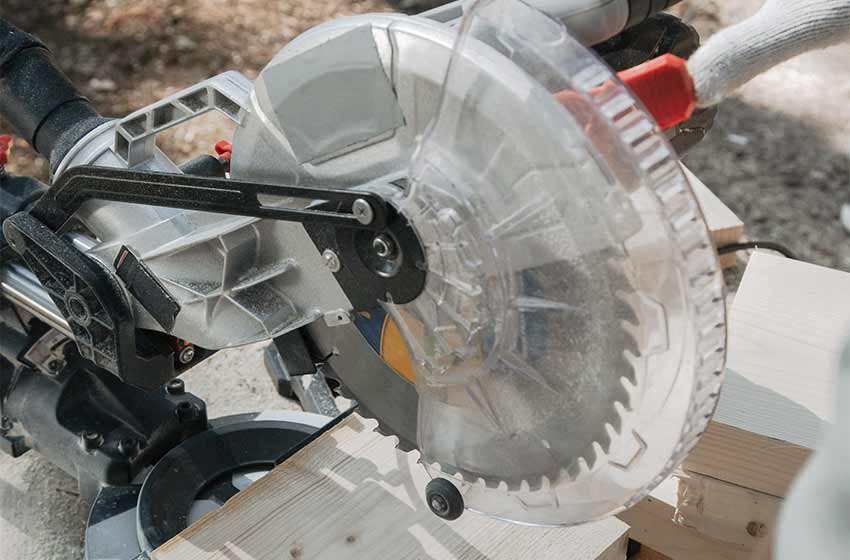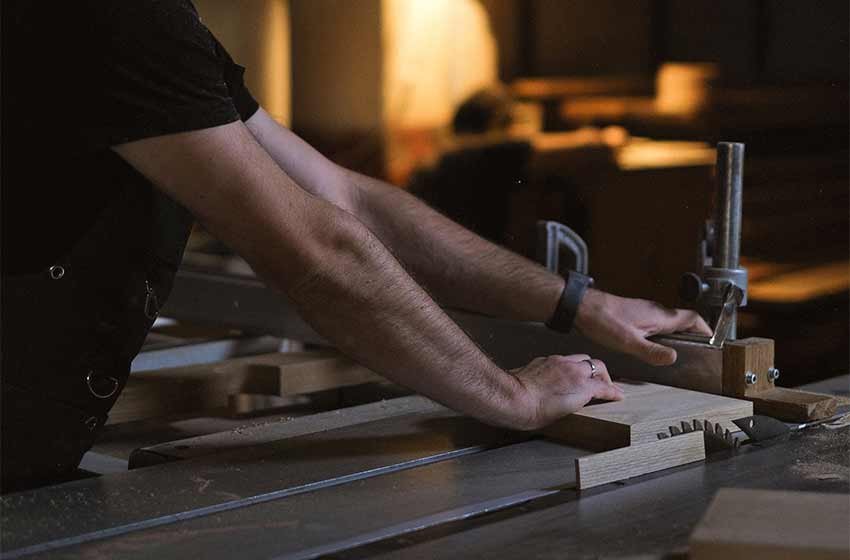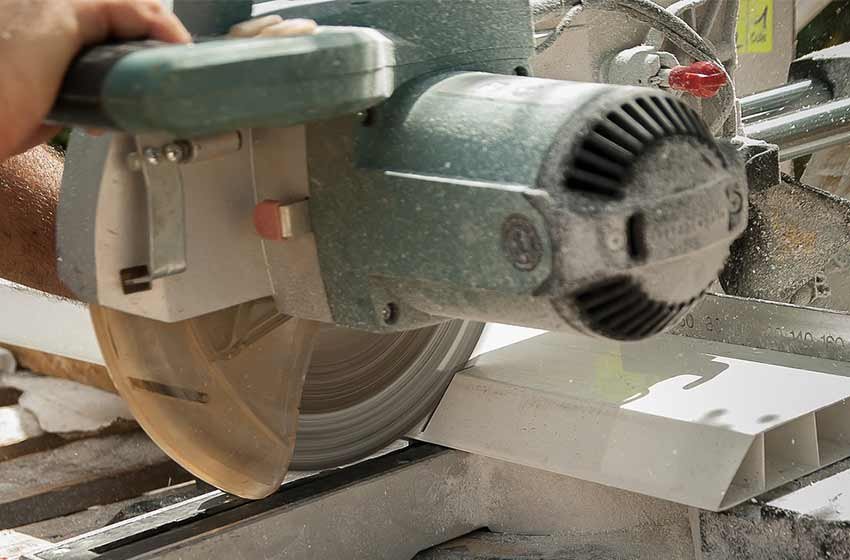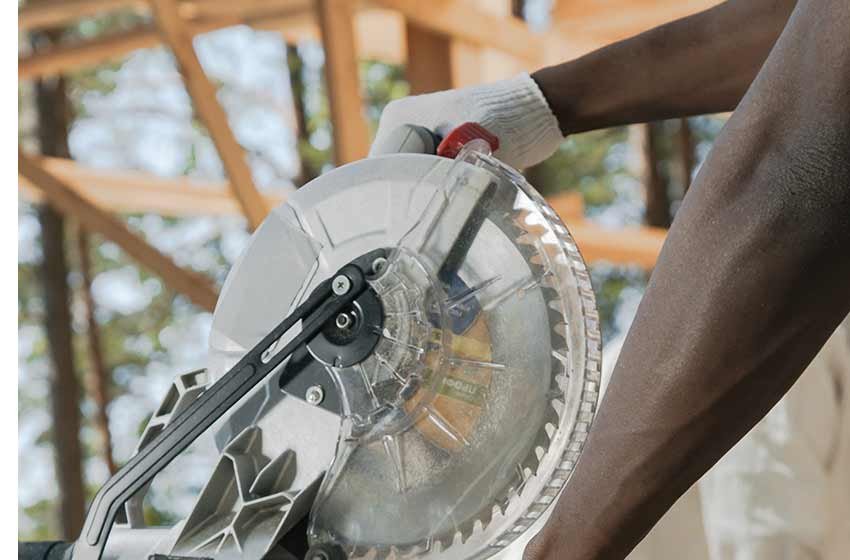The type of blade you use will directly affect the results you get. For this reason, it’s important to know all you can about the table saw blade you choose. A key aspect of this will be the width of said blade.
Depending on the kind of work you’re doing, thicker or thinner table saw blades might be better suited to the task. Luckily for you, table saw blades come in a variety of thicknesses so you can select a blade that will do the job perfectly!
Before we get into the thick of it, there’s one bit of jargon you need to be aware of, and that is the word kerf.
What Does “Kerf” Mean in Woodworking?
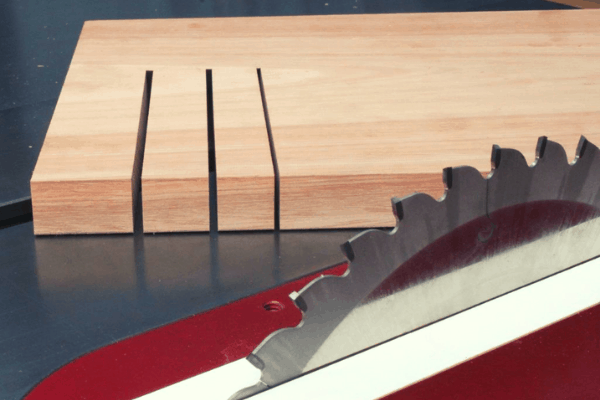
Simply put, kerf refers to the thickness of the cut made. Another way of looking at it is the thickness of material removed by the blade when making the cut. Kerf can also be used to describe the thickness of the blade itself, and kerf width is often found written on blade packaging.
Kerf is generally measured in millimetres (mm) or in increments of inches (ins/ “ ). Majority of table saw blades lie between the 1/8” and 1/4“ (or approximately 3-6mm) although you can also buy other thicknesses for more specialised work.
Why Does Kerf Matter?
There are several reasons why it’s important to know the kerf width of the blade you’re using which are outlined here.
As briefly stated above, kerf determines how much material is removed by the blade, so if you want to lose minimal wood in the sawing process then having a thinner blade (and subsequently smaller kerf) will be the way to go. Although this is more of a cumulative problem rather than an immediate one, over time, a lot of expensive wood can be lost to sawdust if too thick of a blade is used.
(image of pile of sawdust or a close-up of some sawdust)
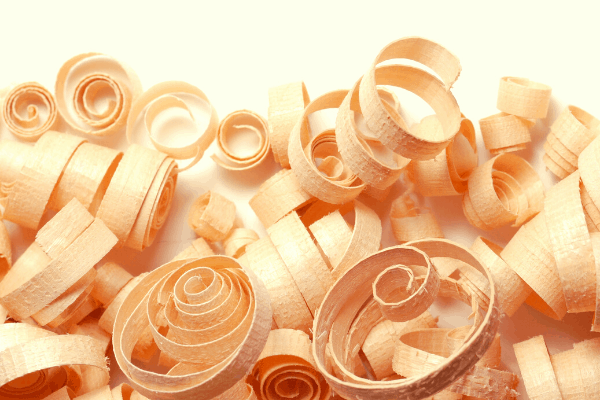
Alternatively, if you want to make cuts of a certain width, then knowing the kerf width of your table saw blade will help you to make the right size cut. For example, if you need a cut of 0.5cm width and you have a blade of 2.5mm kerf width, you’ll need to make two cuts exactly next to each other so that together, they create a larger, 5mm cut.
All in all, keeping close attention to the kerf width of the table saw blade you’re using will help you to cut with the finest precision possible.
Different Thicknesses for Different Jobs
As we touched on in the beginning of this post, the thickness of your table saw blade will determine what kinds of tasks you’re able to do with it (to an extent). Thinner blades provide optimal accuracy and precision whilst thicker blades are better for processing harder woods in jobs where laser precision is not necessarily required.
If you’re working with expensive, exotic, or rare woods, then you’ll want to be maximising every millimetre of it. Using a table saw blade that’s as thin as possible will be the ideal choice for work like this as it will provide the most economical solution to wood waste.

If you’re going to be working on a project that will require a table saw with a higher horsepower motor (eg 3hp), then you’re going to need a bit of a thicker blade. This is because a more powerful motor will obviously apply more force to the blade and will therefore be better suited to a hardier, sturdier blade. Using a thin blade with a high horsepower motor will oftentimes cause the blade to bend which can damage the wood you’re cutting as well as the table saw itself.
All table saw blade thicknesses will allow you to accomplish the same kinds of cuts which you can learn a bit more about here, however the quality and scale of these cuts will differ from thickness to thickness. The ideal situation would be to have a collection of table saw blades of different widths so that you can chop and change depending on what result you’re looking to achieve.
Other Considerations to Make Alongside Blade Thickness
How thick your blade is will not be the only factor that determines the quality of your finished results. There are several other considerations and precautions that can help you to further elevate your woodworking:
- Blade Alignment – it is essential when working with a table saw that you align the blade properly prior to beginning you cut. A misaligned blade is likely to vibrate or wobble more while you’re cutting which can inadvertently widen the kerf leading to more wood waste.
- Number of Teeth – blades with more teeth are generally better suited for precision work where blades with fewer teeth would cause more tearing and chipping to the cut wood. Blades with fewer teeth are more suited to rougher work where finish is not as important.

- Tooth Angle – for more precision woodworking, it is better to use a table saw blade with teeth that are set with minimal or even no angle as this will allow a closer and smoother cut. Blades with teeth set at greater angles will be better for work you want done efficiently and roughly.
- Blade Sharpness – it probably goes without saying that whatever the thickness of your chosen blade, you want it to be as sharp as possible. This will create less resistance and friction, enabling a smoother slicing experience.
Before you start any project involving your table saw, it is vital that you consider these factors to ensure you’re setting yourself up for the greatest chance of success!
Pros and Cons for Different Blade Thicknesses
As we’ve already seen above, the right blade for each job will be determined by the job itself. With that in mind, here’s a round-up of some general pros and cons for different blade thicknesses:
Thin Blade Pros
- Better for portable table saws/ lower power table saws as they require less energy to slice through wood and therefore won’t cause your table saw to bog down.
- Thin blades provide greater accuracy and precision as the blade leaves a smaller kerf.
- Generally thin blades leave a smoother finish characterised by less tearing, chipping, and blow-out.
Thin Blade Cons
- Thin blades can bend or warp when used with more powerful motors as the thin width does not provide enough stability.
- Thin blades can sometimes wear down or dull more quickly due to the thinner teeth.
- Not necessarily appropriate for all kinds of wood. Thin blades might create too much friction trying to get through very hard woods which can leave friction burns on the kerf.
Thick Blade Pros
- Thick blades are really good at getting through a lot of wood very quickly and efficiently.
- Thick blades are the more suitable option for more powerful motors of 3hp+ as they are more stable and sturdier than thinner blades.
- Tend to be easier to control as they don’t wobble or vibrate as much as thin blades.
Thick Blade Cons
- Thick blades create wider kerfs which means more wood is lost to wastage than with thinner blades.
- Not suitable when dealing with more expensive or rare woods as the larger teeth and thicker width can lead to more chipping and tearing.
- Clean-up will be a bit more involved with thicker blades as there will be more sawdust produced.
In terms of price, both thick and thin table saw blades will come in different models and specifications which means that the prices of both will vary greatly. The quality of your results will also depend on the other components of the table saw so it’s important to buy a high quality model.
(image of a full table saw)
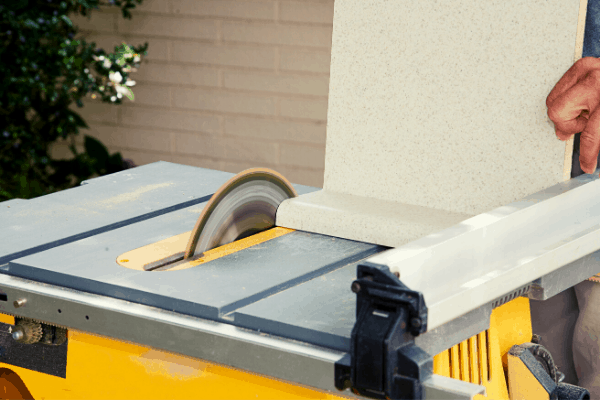
In Conclusion
We now know what the word “kerf” means and how it relates to blade thickness, and we’ve looked at a variety of different job types that suit each blade thickness. While a lot of table saws will come with a particular type of blade as standard, there is a large range of blade options out there with different thicknesses, teeth types, and diameters which are all important factors to consider.
You’ve also seen a condensed pros and cons list for each blade thickness which should help you to decide what kind of blade you need to buy for your work. Both thick and thin blades are capable of putting out beautiful results so as long as the blade matches the job, you’re in the clear!





